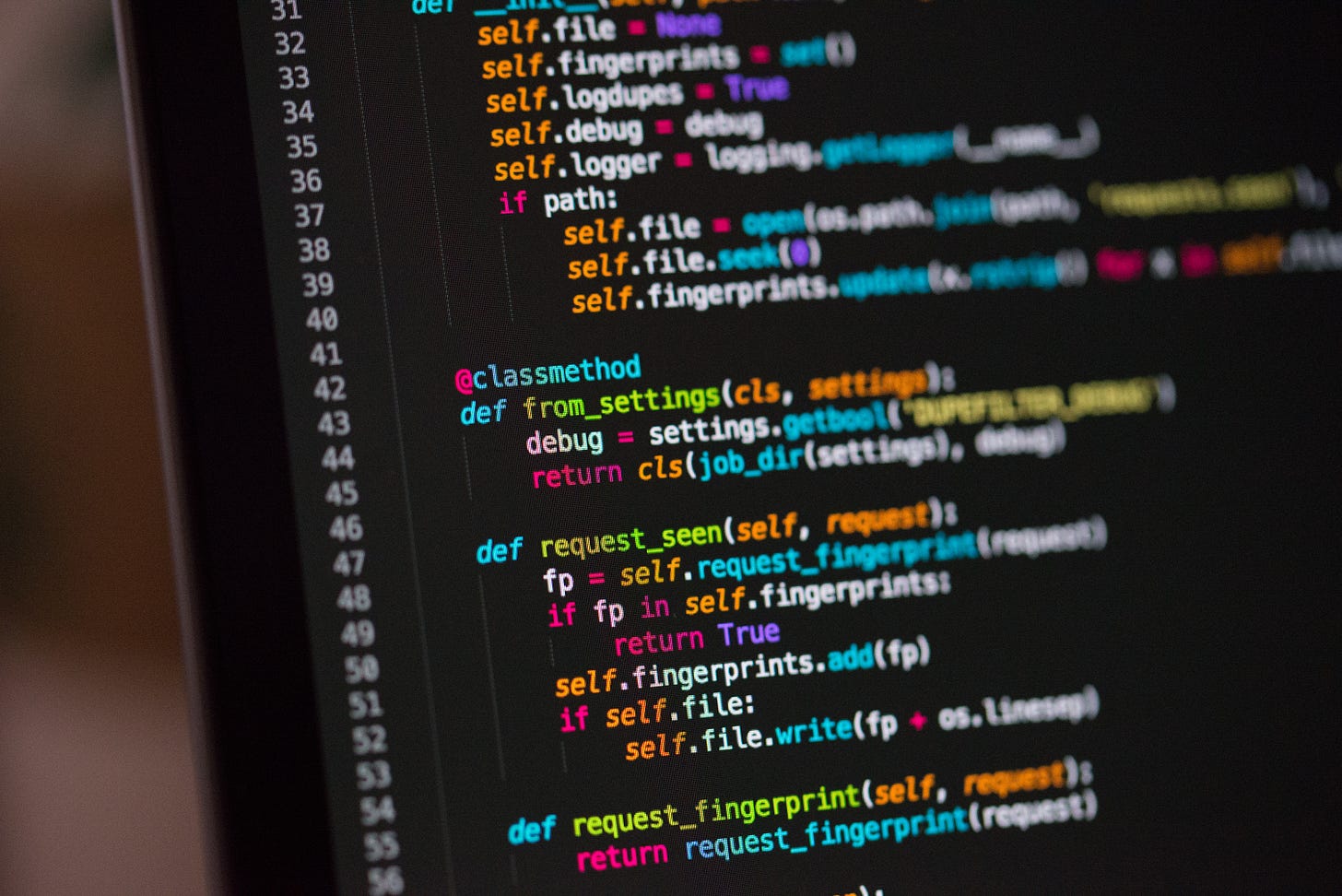The Joys of a Decluttered Mind
Three ways to stay present and reduce anxious thoughts

“Overthinking often doesn’t lead anywhere…It’s like scratching an itch that just won’t go away.” - Nick Trenton
In 2013, my life was a mess. A succession of crises and life-altering decisions ratcheted my anxiety to unsustainable levels:
In January, my cousin passed away after a long illness. Three weeks later, my close friend passed away from cancer.
In early February, I fell multiple times on the way home from work.
The Boston Marathon bombing occurred on April 15th. I was trapped downtown for several hours, unable to walk back to my apartment.
After another fall in April, I was fitted for forearm crutches once it became clear I could no longer walk unassisted.
In July, I moved to a new apartment and inherited a neighbor who blasted music at all hours of the night.
In August, I decided to apply to business school, which meant I had six weeks to cram for the GMAT and send out applications.
Heart palpitations and shortness of breath were a daily occurrence. After one particularly brutal panic attack, I knew something had to change; I couldn’t keep combusting every week. I needed a way to tame the cascade of worries — both real and perceived — that drained my dwindling energy.
Three techniques that have helped
My desperation led me to the book How to Stop Worrying and Start Living by Dale Carnegie, which introduced me to the concept of living in “day-tight compartments” — shutting out yesterday and tomorrow in order to maximize today. It was a helpful framework but only a partial solution.
Despite knowing that I needed to seize the present moment, I struggled at first. I’d direct all my mental energy on the sights and sounds in front of me, only to lose the intensity seconds later. I tried dozens of techniques to quiet my mind and reduce anxiety, but most failed.
Then I had a breakthrough. I found a few approaches that enabled me to stay in the present moment. I was able to bask in its simplicity and achieve a measure of peace that improved the quality of my life.
Here are three techniques that I found worked the best. By sharing my experience, I hope that it will inspire you to give them a try.
Meditation
I was introduced to meditation in 2013 after reading a review of Dan Harris’s book, 10% Happier. Harris — then a news anchor at ABC News — credits meditation with helping to calm his mind in the wake of a panic attack on live TV in 2004. I thought back to my own panic episodes and was intrigued by the possibility that meditation could have the same transformative impact on my life.
I did some research and learned that there is no “right way” to meditate. The internet is full of advice on what we should and should not do. The contradictions made my head spin:
Do I clear my mind or focus intently on one thing?
Should I repeat a mantra or be silent?
Should I meditate for five minutes, thirty minutes, or a whole week?
I first tried to meditate for ten minutes in the morning, before coffee. I sat up in bed and focused all my efforts on my breathing.
I fell asleep. (Oops.)
I then moved the session to later in the evening, after I came home from work. After an initial feeling of tranquility (beginner’s luck?), my mind erupted with worry after only a few minutes. This went on for several days.
The only reason I didn’t have a temper tantrum and give up was because I had read somewhere that it takes weeks of practice before meditation becomes second nature. I knew I had to persist through the discomfort and keep going. I tried again the next day, and the next, and the next, with little progress to show for my efforts.
However, by the second week, I was able to extend the tranquility. After a month, I was able to meditate for a half hour without ripping my hair out. I soon noticed an improvement in my mental clarity that carried over into the following day, which motivated me to continue the practice. I have stuck with it ever since.
A word of warning: meditation is hard. Impossibly, maddeningly hard. Even after years of practice. But it has made a tremendous difference in regulating my emotions and bringing peace to my life. With less clutter to compete for my attention, my mind is better able to focus on the present moment and stay there.
Whenever I fall off the wagon (it happens more than I’d like), I revert to feeling anxious and irritable. This is how I know it works.

Running “debug mode”
Since COVID, there has been a renewed interest in mindfulness, defined by Mindful.org as “the basic human ability to be fully present, aware of where we are and what we’re doing, and not overly reactive or overwhelmed by what’s going on around us.”1
With mindfulness, minor details that often get overlooked are given special importance.2 If we experience an anxious thought, we can gently discard it without judgment or attachment and return our focus to the task at hand. The key is simply to get our minds off autopilot.
I have a love-hate relationship with mindfulness (it takes too much mental energy for me to do well) but there is one aspect that I have found helpful: inspecting my thoughts.
A few months ago, I was listening to an episode of The Knowledge Project podcast with entrepreneur and investor Naval Ravikant. In the episode, Ravikant discussed how his mind often goes haywire. When this happens, he runs his mind through what he calls “debug mode”:
I try to keep an eye on my internal monologue. It doesn’t always work. In the computer programming sense, I try to run my brain in debugging mode as much as possible.
If I’m by myself, like just this morning, I’m brushing my teeth and I start thinking forward to the podcast. I started going through this little fantasy where I imagined you asking me a bunch of questions and I was fantasy-answering them.
Then I caught myself. I put my brain in debug mode and just watched every little instruction go by…At that point, I shut down and I went back to brushing my teeth. Then I was noticing how good the toothbrush was and how good it felt. Then the next moment, I’m off to thinking something else. I have to look at my brain again and say, “Do I really need to solve this problem right now?”
I find “debug mode” to be a more approachable path to mindfulness. If I can’t sustain focused effort on the present moment, I can at least run debug mode and observe, without judgment, the thoughts slowing down my internal CPU.
Like Ravikant, if I come across a thought that doesn’t need to be addressed at the present moment or that distorts reality (such as an irrational fear I know isn’t true), I can capture it and ask myself, “Is this useful?”3
The answer is usually no.

The Parking Lot
The last helpful strategy is a complement to the other two: The Parking Lot.4 It is simple, yet effective.
A byproduct of running debug mode is having somewhere to “park” the thoughts that can be addressed later. If I don’t need to think about something now, it doesn’t mean I should never think about it.
All this requires is a blank page. (I have a dedicated page in my digital note-taking app.) During the week, I jot down any ideas that pop into my head, from non-urgent tasks I need to address, to writing ideas, to books I want to add to my reading list. None of these items require that I drop everything to address them, but they are just important enough that if I don’t write them down, they will overwhelm my headspace. On Saturdays, I churn through the list and find that most of the ideas aren’t worth acting on.
By jotting them down on a blank page, I ensure that I will eventually address the thoughts, one way or another. This negates their anxiety-inducing power.
Ten percent less anxious
The journey to a decluttered mind has been a decades-long pursuit. Although the trial and error has caused frustrations and gray hairs, there’s no question that I would be in a far worse place without these strategies. At a minimum, they have provided me with the mental clearing necessary to plan for the future, react to challenges with confidence, and enjoy my life.
Had I not embarked on my journey to tame my thoughts and anxieties, I don’t know where I’d be today. It’s not a coincidence that as soon as I began meditating, as soon as I was able to reduce my stress level from a boil to a simmer, I was able to gain control of my life. My panic attacks all but stopped. (I have had a few more over the years but nowhere near as many as in 2013.)
Harris says that meditation makes him ten percent happier. Well, I’d say meditation, debug mode, and the parking lot make me ten percent less anxious. It doesn’t sound like a lot, but it makes a huge cumulative difference.
Find what works for you
I hope that my example motivates you to consider the impact these techniques can have on your own life. Everyone is dealing with anxiety and stress these days. And yet, so many suppress these feelings until it’s too late. I would know. I’ve been there.
Before you go “There’s no way I can meditate!”, know that I felt the same way. There will never be a perfect time to start.
If you don’t know where to begin, take a few minutes to analyze your anxieties. What are you hoping to gain from a calmer mind? What causes you the greatest distress and worry? Are you constantly anxious and consumed by the minutiae of everyday life? Once you’ve established your emotional baseline, you will be able to track your progress over time. Make sure you check in with yourself periodically.
Don’t be discouraged if it takes a lot of trial and error to find a technique that works. You will more than likely embrace one strategy and dismiss another. If all your friends love meditation but you find it’s not for you, that’s okay. This isn’t a competition.
What matters is finding something that works, no matter how long it takes. Your mind is worth the investment.
🗣️ If you have any go-to techniques to help declutter your mind, let me know in the comments!
Postscript: A few helpful resources to get started
10% Happier, by Dan Harris: A humorous, thought-provoking book about meditation and mindfulness. Part memoir, part how-to guide. Harris now runs a wellness company, Ten Percent Happier, based on the book.
Stop Overthinking, by Nick Trenton: Another helpful book about calming anxiety. Trenton offers several research-based techniques to help quiet our minds.
How to Stop Worrying and Start Living, by Dale Carnegie: A how-to guide for overcoming worry. It was written in the 1940s, so some of the examples are a bit outdated, but many of the techniques still hold up. I got the most out of Chapter 1, “Live in Day-Tight Compartments”.
YouTube and Meditation apps: There are many YouTube videos and apps (such as Calm) that provide guided meditations for people of all ability levels. I prefer silence or soft music to guided meditations, but many people swear by these approaches.
Bringing Order to the Chaos - An article I wrote in May about taking one hour per week to jot down what’s on your mind. This is another helpful decluttering approach.
https://www.mindful.org/what-is-mindfulness/
For example, as I type this article, there are dozens of sensations I could focus on, from the feeling of my fingertips pressing on the keyboard to the click and clatter of the keys popping up and down. I could focus on the blinking cursor as I think of what to say next or the slightly bitter taste of the coffee I just sipped. The more I pay attention to these sensations, the less my brain has the opportunity to dwell on existential angst.
A useful phrase mentioned in 10% Happier.
I’m terrible at coming up with names, what can I say.



I love this, Chris. I started a meditation practice when I was 16, waking up at 5AM to do it. And the last time I did it, I was falling out of bed in the lotus position, having fallen asleep, catching myself before I hit the ground. My first Buddhist practice was Tibetan, which is based on gratitude and a quiet mind. Yeah. As a writer, I never have a quiet mind, so went the Nichiren route and chanted. Mindfulness? Suck at it. I have awareness of what's going on, why I'm reacting the way I'm reacting, giving myself a moment to ask if I want to carry on in this way or knock it off. But, is that mindfulness or just part of getting older and more self-aware? I'm so glad you're keeping up with this practice. Ten percent is nothing to sniff at (that's what agents take and they're doing just fine). I'm doing some energy work (DIY) and that is making a difference. Also, we are syncing with our photos now. LOL. xo
Love this essay Chris - I've been having so many stuttering starts with a meditation practice - particularly because I feel like I don't want to sit with my racing thoughts! How long did your first sessions last?